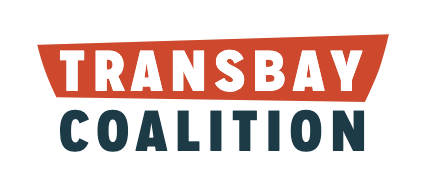Caltrain will be the first major agency in the Bay Area to face a fiscal cliff, as federal relief funding runs out and ridership grows back more gradually. This could result in cuts to service and/or maintenance starting this coming year.
To address the transit fiscal cliff as a region, the MTC has requested that agencies assess the level of service they would provide at three different levels of ridership recovery and revenue. BART had a board presentation in October showing fiscal cliff impacts starting in 2025. Caltrain presented its report to the Workplan Committee on November 16th showing a fiscal cliff looming in 2024.
The MTC report format turned out to be not a perfect fit for Caltrain. The agency’s financial picture is changing with new revenue from the Measure RR sales tax, and new operating expenses expected due to electric service scheduled to start in FY24. Therefore, Caltrain created a fourth scenario (see table below).
Regardless of the “square peg / round hole” issue with MTC’s reporting template, it is clear that Caltrain is facing a budget gap starting this coming fiscal year, and anticipating deficits continuing into the future.
How does Measure RR fit in?
The passage of Measure RR in 2020, with revenue starting to flow last year (light blue in chart below), complemented the federal relief funds (gold), preventing a catastrophic situation that could have led to a multi-year shutdown that would have been difficult to recover from.
In 2017, when the legislation authorizing a 3-county sales tax to fund Caltrain was passed, it looked like an eighth percent sales tax would be enough to cover the public funding needed for Caltrain service, with plenty left over to fund maintenance and capital improvements.
But the pandemic cut a big hole in ridership and fare revenue, which is currently generating about a third of pre-pandemic level. So the bulk of Measure RR is needed to keep trains running.
Also, in the discussions leading up to putting Measure RR on the ballot, Caltrain’s three county partners in San Francisco, San Mateo and Santa Clara Counties were clear about Measure RR being used to replace member contributions for operating funding. But the partners never reached clear agreement on whether to continue to contribute to capital maintenance and projects.
Ridership regrowing gradually – a future beyond commuter rail
Since pandemic stay at home orders eased, ridership has been regrowing gradually. But the white collar commute pattern that was Caltrain’s bread and butter before the pandemic has significantly diminished, with many people working from home all or part of the time.
By contrast, in Vancouver Canada, ridership is back to 80% of pre-pandemic levels. Transit consultant Jarret Walker explains that Vancouver has created a network optimized for the all-day, all-direction, all-purpose trips that people are making now.
As Caltrain considers strategies and budgets for the future, it will be important to consider the type of service that will be needed to build ridership for a greater diversity of riders and trips than in the past.
Solutions – funding, ridership regrowth, and transformation
Caltrain will hold a board budget workshop in early 2023. In addition, Caltrain will be working with MTC and other agencies to deal with the fiscal gap for the region’s transit system.
Fiscal gap funding. Even though MTC’s template is not a perfect fit for Caltrain’s exact financial situation, the big picture is spot on – the region’s agencies, especially BART and Caltrain, are facing a fiscal cliff as federal funding runs out. MTC is leading state advocacy for a multi-year fiscal gap funding for transit, while laying the groundwork for a regional funding measure to support frequent, well-integrated service.
Capital and operations. Because of the flexibility of Measure RR, Caltrain’s budget challenges initially present as a problem with the annual capital budget, which pays for maintenance and safety projects such as replacing old bridges.
In working on a regional solution, agencies and MTC should work together on solutions that can contribute to routine maintenance as well as running service. And with federal and state funding available from recent years, there may be opportunities to supplement funding for the smaller capital projects.
While maintenance such as overhauling locomotives serves systemwide needs, many capital projects have a physical location in a single county and there’s a logical argument to be made for county partner contributions for such projects.
Service and transformation In dealing with the post-pandemic budget challenges, Caltrain faces an existential opportunity to transform from a focus on white collar commuting to more multi-purpose travel.
And in order to evolve from a focus on white collar commuting, serving more kinds of trips and more kinds of riders, Caltrain will need to continue and improve frequent, all-day, all-week, well-connected service. Cutting service would lead in the opposite direction of what is needed to regrow ridership.
